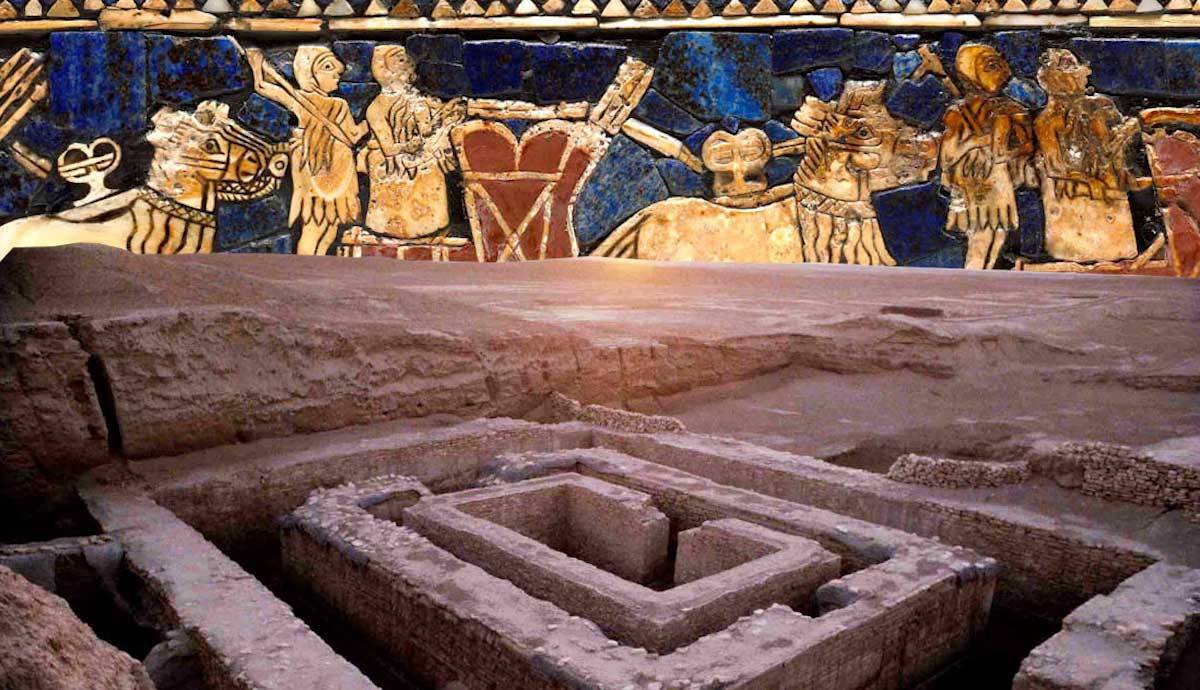
Controversies regarding the Sumerian people — generally called “The Sumerian Problem” — started almost as soon as their civilization was rediscovered. After almost two centuries of discoveries and interpretations, and the deciphering of ancient cuneiform texts from various ancient Near Eastern sources, the very existence of the Sumerians as a distinct nation is still questioned today by some learned scholars.
Add to this the various theories about ancient aliens and mysterious teachers, and we have a veritable melting pot of beliefs, myths, and interpretations that defy logic. Many Assyriologists and Sumerologists, like Thorkild Jacobsen and Samuel Noah Kramer, have contributed immensely to the unraveling and interpretation of facts from conjecture. They started to create a semblance of order using the conglomeration of information from archaeology, cuneiform texts, guesswork, and unsubstantiated theories. But even they had to guess and make assumptions.
What Is the Sumerian Problem?
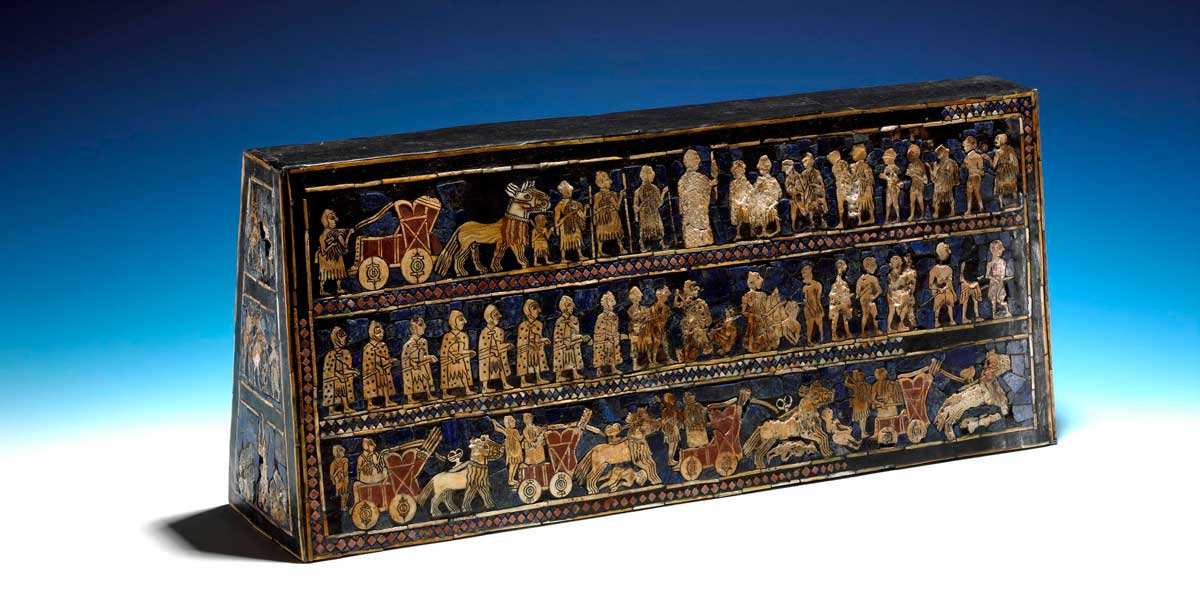 Wooden Box now known as the Standard of Ur, 2500 BCE, via the British Museum
Wooden Box now known as the Standard of Ur, 2500 BCE, via the British Museum
Discovering our ancient roots is enlightening and wonderfully exciting, one clue leads to a discovery, which leads to another clue, which leads to another discovery, and so on — almost like a top-selling mystery novel. But imagine that your favorite mystery or crime novelist suddenly ends a book without tying up the pieces — and with some crucial pieces of the mystery still missing. Without crucial evidence, without enough hints to lead you further, you may check and recheck if you were right in your analysis and tentative conclusions. Sometimes archaeologists end up with just such a mystery.
In the case of the Sumerians, the problems started from the very beginning; their very existence, their identity, their origin, their language, and their demise have all been questioned. Once most of the archaeological and linguistic fraternities agreed that a previously unknown group of people had in fact settled in southern Mesopotamia (modern Iraq) before 4000 BCE, theories abounded.
Get the latest articles delivered to your inbox
Sign up to our Free Weekly Newsletter
Scholars theorized, reasoned, and debated. Instead of arriving at a reasonable potential geographic location, questions and mysteries multiplied. The issue became several issues. The Sumerian Problem became so emotional for some scholars that they attacked each other openly and personally. The media had a field day, and the scholarly war became in itself part of the problem.
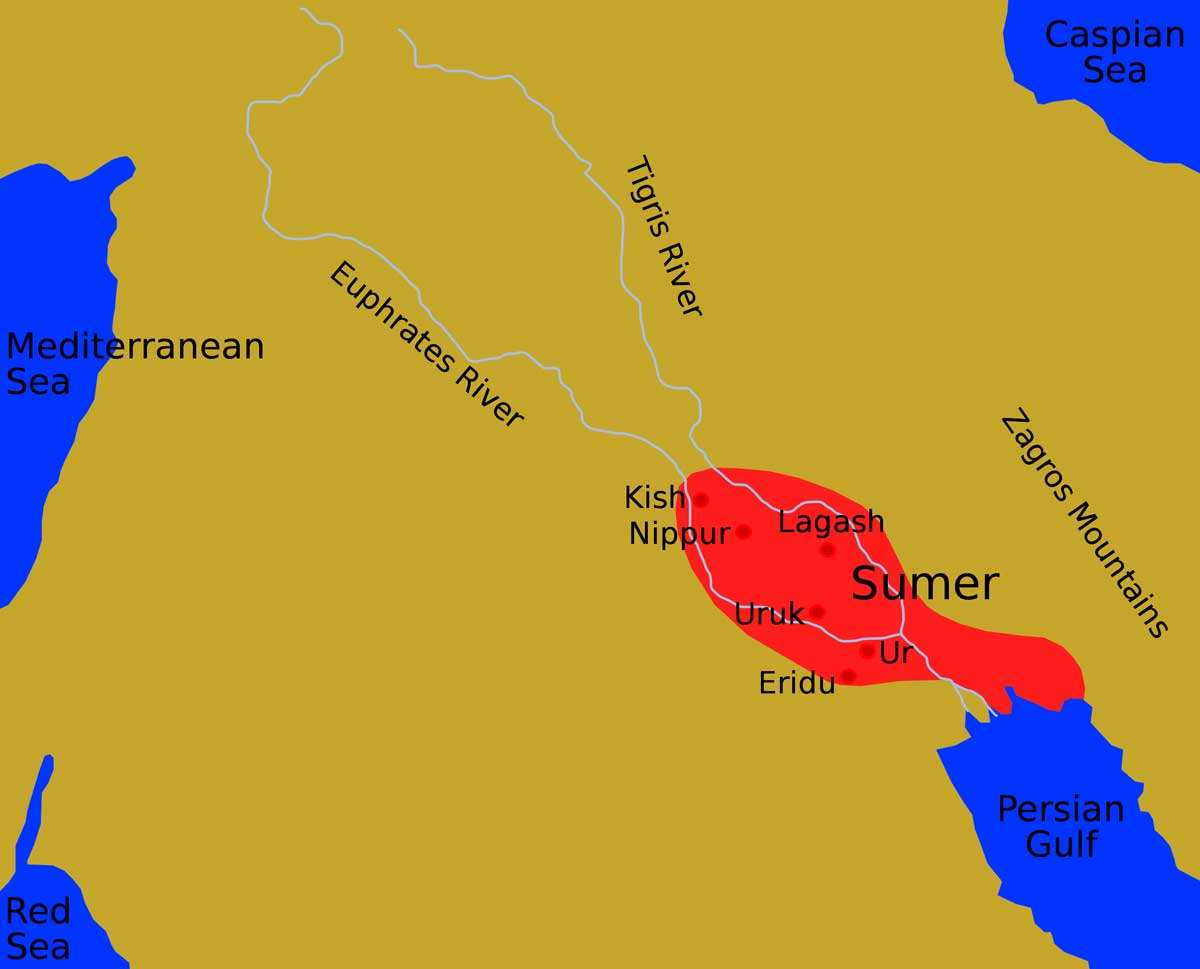 Map of Sumer and its surroundings, via Wikimedia Commons
Map of Sumer and its surroundings, via Wikimedia Commons
The truth is that a civilization that lasted for more than 3,000 years would inevitably have gone through deep changes — in social, political, cultural, and economic terms. It will have been affected by outside factors such as the physical environment, contact with and incursions from outsiders, and pestilence. It would also have been impacted by population growth patterns, cultural changes, habits, the natural diffusion of immigrant cultures, as well as thought patterns, religious influences, internal strife, and wars among city-states.
How then can we define such a multiplex of societal epochs as one single civilization? Were the Sumerians rough and robust outsiders that took over an already refined and more advanced southern Mesopotamian society?
Background: Why Is There a Problem?
 Archaeological remains of Uruk, arguably the first city in the world, photo by Nik Wheeler, via Thoughtco
Archaeological remains of Uruk, arguably the first city in the world, photo by Nik Wheeler, via Thoughtco
After thousands of years of nomadic and semi-nomadic seasonal settlements created by hunter-gatherers, some settlements in southern Mesopotamia were settled all year round. From around 4000 BCE there appears to have been a relatively rapid development in agriculture, culture, and technology.
Crops were planted using irrigation: canals diverted rivers, channels ran from rivers to crop fields, and furrows led water into the fields. A simple plow was converted into a seeder plow which could do both jobs at once — and could be pulled by draught animals.
By 3500 BCE agriculture was no longer so labor-intensive, and people could direct their attention to other occupations. Urbanization and specialization in the manufacturing of goods such as ceramics, farm implements, boat building, and other crafts led to cities being built around large religious centers by 3000 BCE. Why and where did this burst of innovation come from?
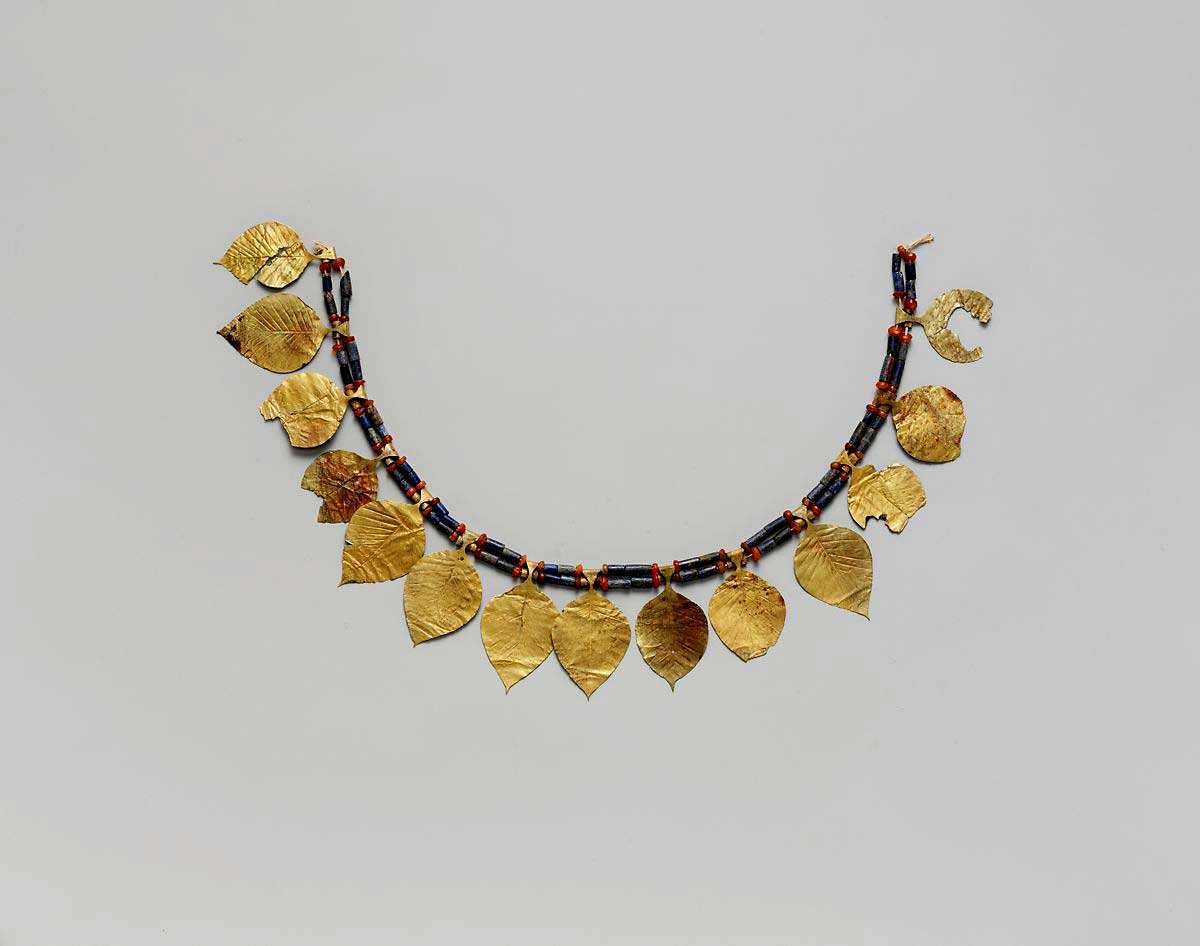 Sumerian headdress from Royal Cemetery at Ur, 2600-2500 BCE, via Metropolitan Museum of Art, New York
Sumerian headdress from Royal Cemetery at Ur, 2600-2500 BCE, via Metropolitan Museum of Art, New York
Various Biblical scholars and treasure hunters have actively searched the ancient Near East for proof of Biblical stories and to find legendary riches from ancient civilizations. Scholars and historians from as far back as Herodotus knew well enough about the Assyrians and the Babylonians. Nobody, though, knew that these civilizations inherited their advanced cultures from a still older civilization. Though the Sumerians were gone and forgotten, their legacy was very much alive. It had passed down through other geographic locations, and through social, political, and economic developments as empires came and went through the ages that followed.
It was during the 1800s that astute Assyriologists noticed that there was a distinct and mysterious difference in the cultural legacy that preceded that of the Assyrians and the Babylonians. By this time, they knew a lot about these two major Mesopotamian civilizations from archaeological discoveries and ancient records that had been deciphered, including from biblical references. It was becoming clear that there must have been some astonishingly advanced developments before the Assyrians and Babylonians appeared.
The Sumerian Language Quest
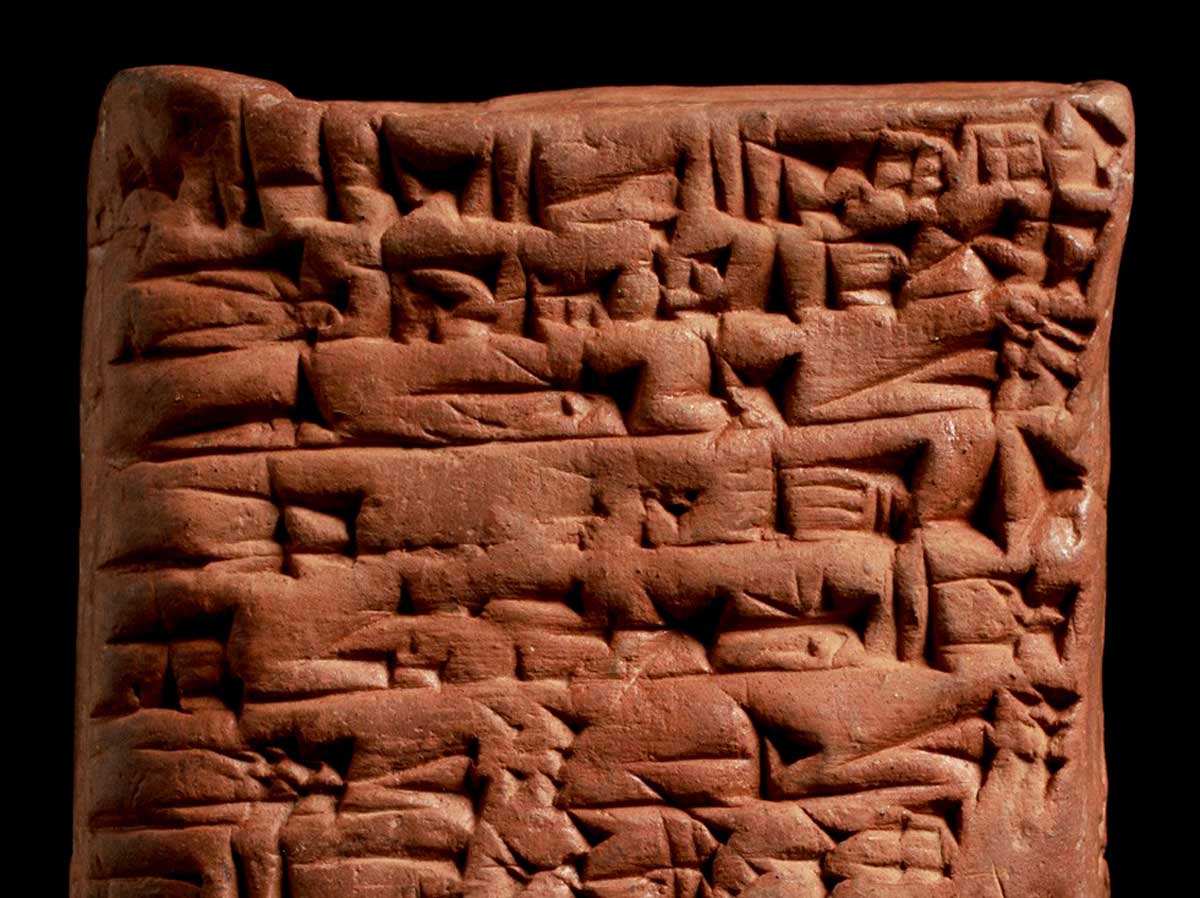 Cuneiform tablet with Sumerian writing,1822-1763 BCE, via Vatican Museum, Rome
Cuneiform tablet with Sumerian writing,1822-1763 BCE, via Vatican Museum, Rome
The discovery of Ashurbanipal’s library at Nineveh and the subsequent translation of its texts revealed three distinct languages written in similar cuneiform script. Assyrian and Babylonian were distinctly Semitic, but a third Semitic script contained words and syllables that just did not fit into the rest of its Semitic vocabulary. This language was Akkadian with non-Semitic Sumerian phraseology interlaced. Excavations at Lagash and Nippur provided plenty of cuneiform tablets, and these were entirely in this non-Semitic language.
Researchers noted that the Babylonian kings called themselves the kings of Sumer and Akkad. Akkadian was accounted for, so they named the new script Sumerian. Then they found tablets with bilingual texts, believed to be from school exercises. Although these tablets were dated to the first millennium BCE, long after Sumerian as a spoken language had ceased to exist, it continued as a written language similar to the use of Latin today.
Identifying and deciphering Sumerian did not solve the problem of their origins. The language is what is known as a language isolate — it fits into no other known language group. Instead of clarifying the origins of the Sumerians, it added to the confusion.
Scholars have identified many Semitic names among the place names used by the Sumerians for some of their greatest cities. Ur, Uruk, Eridu, and Kish are but a few of these. This could mean that they moved into places that were already settled — or it could mean that they kept the place names given to these cities by their conquerors — the Akkadians and the Elamites — after regaining their independence. The Elamites, though, were also a non-Semitic speaking people, and the identified names are Semitic.
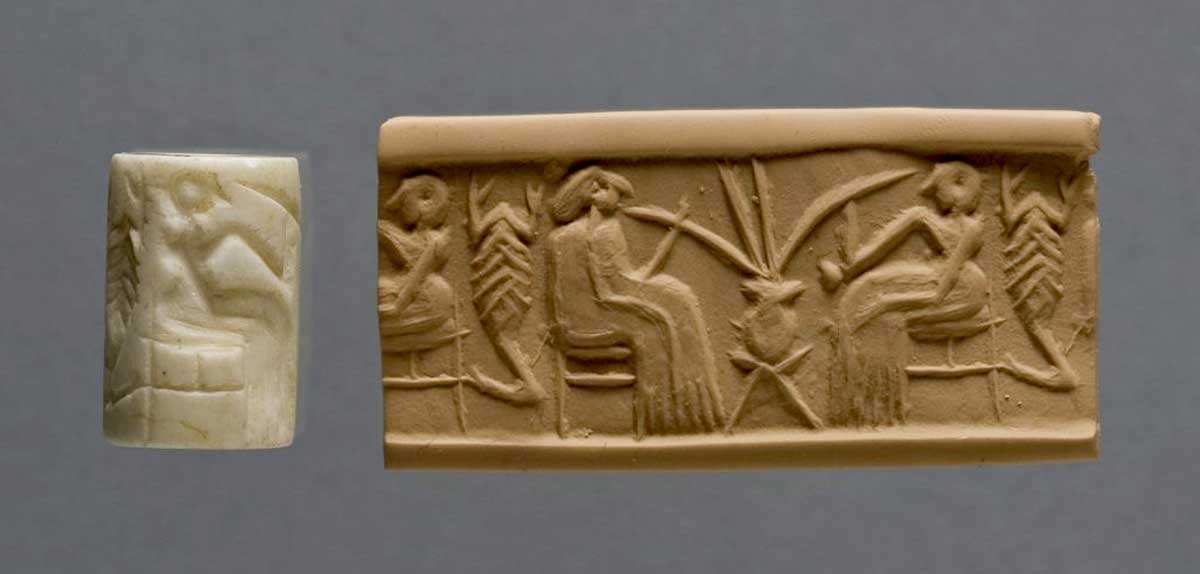 Cylinder seal with men drinking beer, ca 2600 BCE, via Theconversation.com
Cylinder seal with men drinking beer, ca 2600 BCE, via Theconversation.com
Another scholarly argument is that some of the earliest words from the Sumerian language are from the most primitive phase of their agricultural development. Many words are names for local southern Mesopotamian animals and plants. This may mean that the Sumerians were primitive immigrants settling into a more advanced culture (the Ubaid culture). They then later adopted the culture of their host country and developed it further with more innovations. Another argument in favor of this hypothesis is that the Sumerian words for these above objects are mostly one syllable, whereas the words for more sophisticated objects have more than one syllable, indicating the more advanced culture of another group.
Samuel Noah Kramer has argued that the Ubaid culture in the region was already advanced when the Sumerians arrived. The Ubaid culture, he posited, came from the Zagros mountains, and amalgamated over time with several Semitic groups from Arabia and elsewhere. After the Sumerians conquered this more advanced Ubaid culture, they and the Sumerians together achieved the heights that we now assign to the Sumerian civilization.
More Sumerian Origin Hypotheses
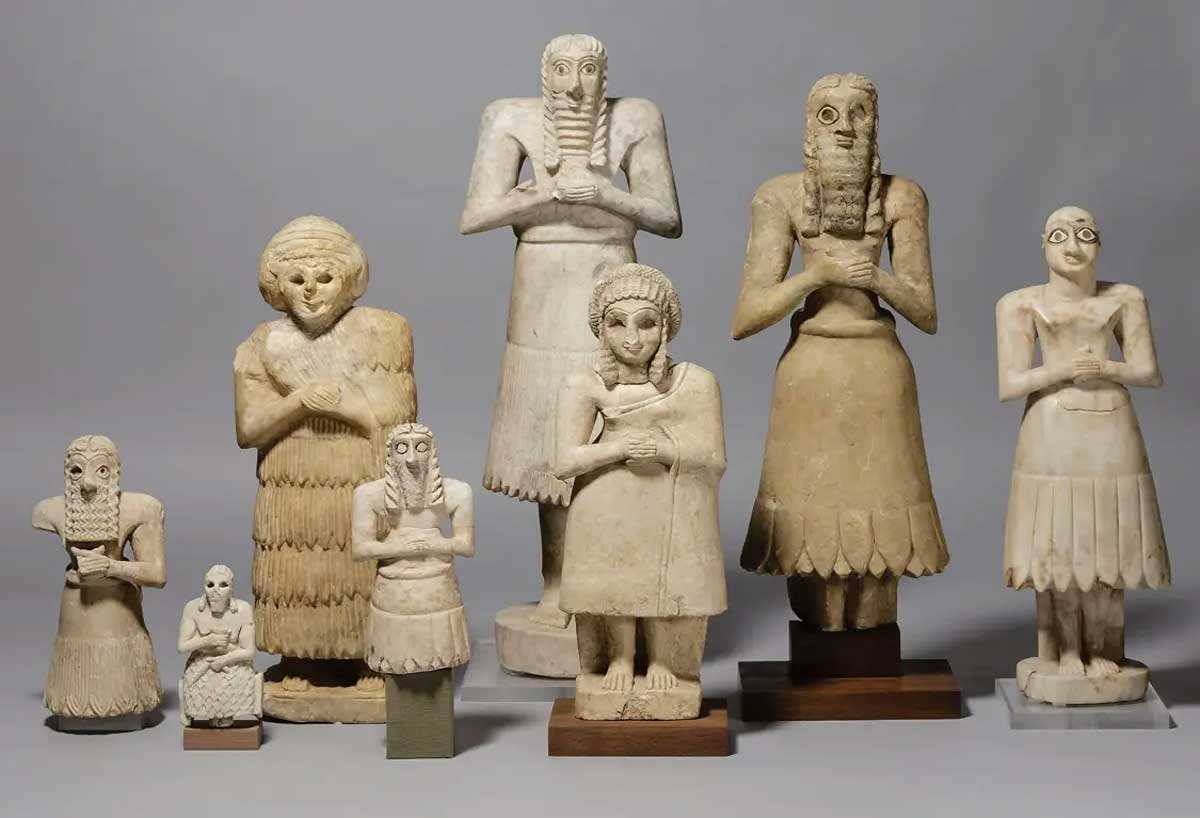 Sumerian statuettes, ca 2900 – 2500 BCE, via Oriental Institute, University of Chicago
Sumerian statuettes, ca 2900 – 2500 BCE, via Oriental Institute, University of Chicago
Archaeological finds from the earliest levels of Sumerian civilization, such as the oldest Eridu temple structures, confirms that southern Mesopotamian culture is similar from at least the Ubaid Period right through the giant leaps towards urbanized civilization. There is no sign of any outside material in these earliest levels, and a lack of foreign pottery clinches it.
On the other hand, some theorists maintain that religious structures like ziggurats appear in Sumer only in the late Uruk period. The time selected by the immigrant theorists for the Sumerian arrival in the already flourishing Ubaid Period of southern Mesopotamia. Ziggurats, they say, were built to resemble the places of worship they left behind in their homeland.
However, they were obviously not considering the seventeen layers one on top of the other identified at Eridu. The oldest of these dates back to before the Ubaid Period. Scholar Joan Oates has proved beyond doubt that there was a definite cultural continuity from the earliest Ubaid period until the end of Sumer.
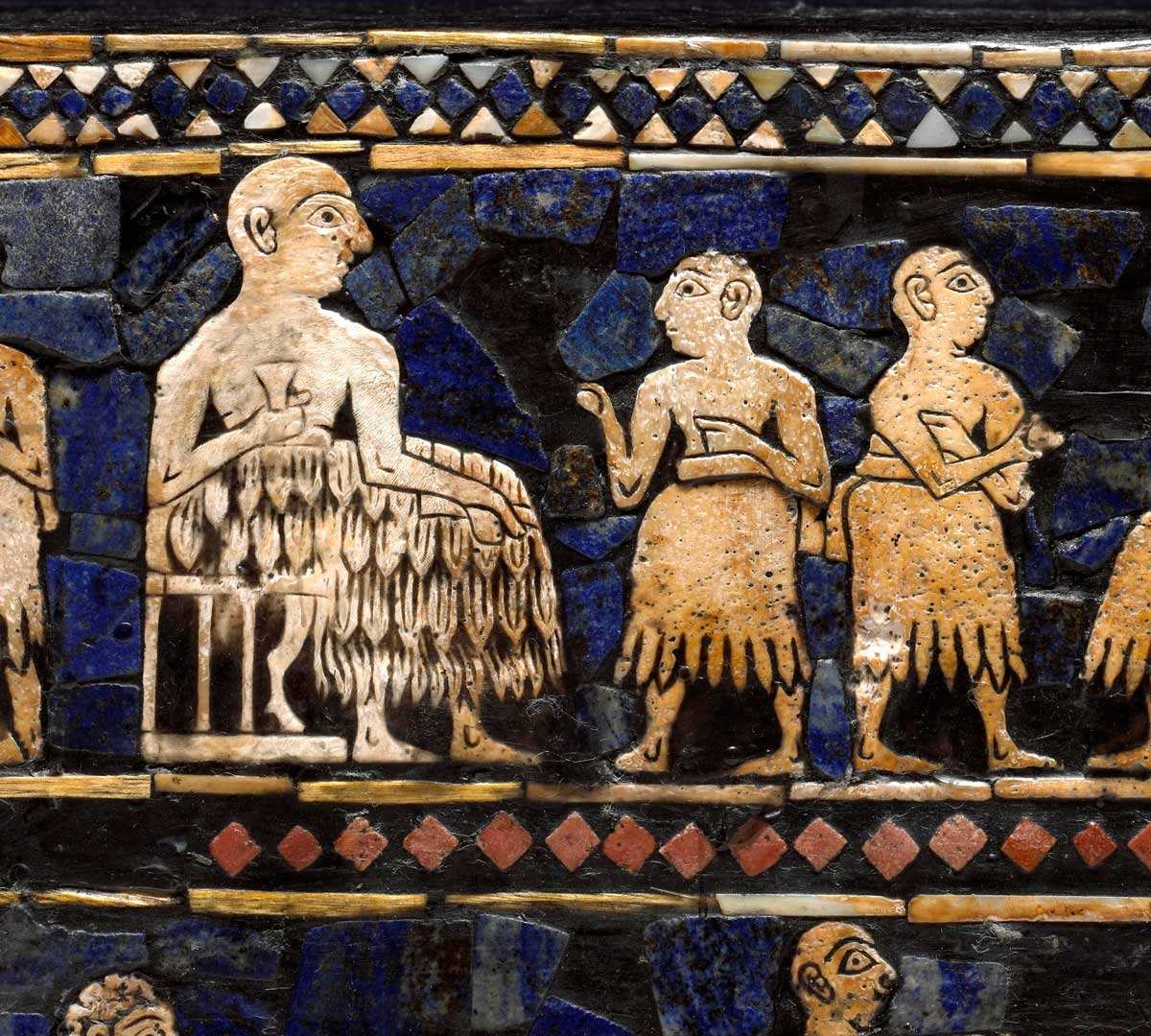 King of Ur, from the Standard of Ur, 2500BCE, via the British Museum
King of Ur, from the Standard of Ur, 2500BCE, via the British Museum
The hypothesis that the Sumerians came from a homeland beyond the Persian Gulf towards the East has been floated on and off since their identification. This theory is popular with those who do not believe that the Sumerians would have traveled across the hinterland of Mesopotamia all the way to the tip of the land where resources are more limited. Another southern origin idea posits that the Sumerians were Arabs who lived on the east coast of the Persian Gulf before their home was flooded after the last ice age.
Other scholars theorize that their skills with metalwork — for which there were zero resources in Sumer — and the building of high places (ziggurats), indicate that their homeland must have been in the mountains. The most popular theory here points to the foothills and plains of the Zagros mountains — today’s Iranian plateau.
Others suggest that they may be related to the original peoples of ancient India. They find similarities between the Sumerian language and the Dravidian group of languages from this region.
To the north, we have several areas that could be likely candidates if the Sumerians were immigrants to southern Mesopotamia. The areas around the Caspian Sea, Afghanistan, Anatolia, the Taurus mountains, Northern Iran, Kramer’s trans-Caucasian area, Northern Syria, and more.
The Sumerian Demise
 Sumerian tablet naming harvesters of barley, via Spurlock Museum of World Cultures, Illinois
Sumerian tablet naming harvesters of barley, via Spurlock Museum of World Cultures, Illinois
There are not as many theories about the demise and complete disappearance of the Sumerian people around 2004 BCE as there are about their origins. What is certain is that the occupancy of their cities, their once magnificent artwork, their wealth, and their importance to the outside world shows a marked decline. The end came when the Elamites conquered the already weakened Sumer in 2004 BCE.
The most logical explanation is that there was not just one single reason, but a combination of factors coming together at Sumer’s most vulnerable moment. The wealth of Sumer lay in its magnificently efficient agricultural production. They traded surplus crops across the known world to obtain the resources they lacked.
However, the rivers that they had tamed and used to their advantage carried in their lifegiving waters and fertile silt enormous quantities of salt. Over time the soil became so salinized that crop yields became smaller and smaller. By around 2500 BCE there are already records of a significant decline in wheat yields, as farmers concentrated on hardier barley production.
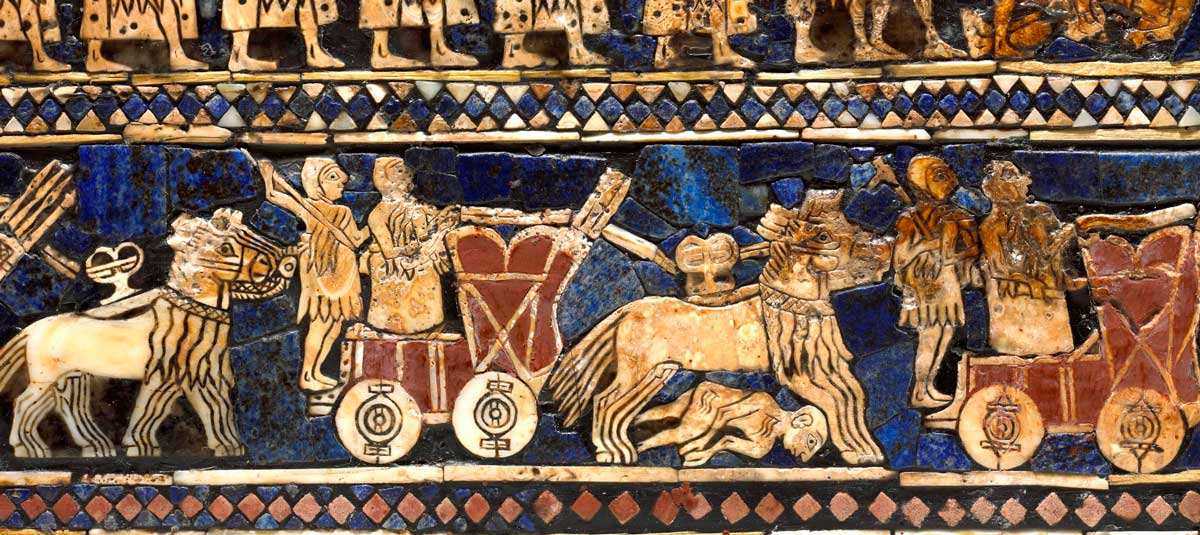 Sumerians in motion on the so-called Standard of Ur, 2500 BCE, via British Museum
Sumerians in motion on the so-called Standard of Ur, 2500 BCE, via British Museum
From around 2200 BCE there appears to have been long dry spells resulting in droughts that affected most of the Ancient Near East. This climate change lasted for several centuries. It was a time of great unrest accompanied by large groups of people moving from one country to the next. Dynasties and empires fell, and when things settled again, new empires arose.
The people of Sumer most probably left their cities for rural areas in their search for food. French scholars posit that people also came to realize that their personal freedom had diminished over the years. Taxes and other burdens created by state and religious institutions had grown, and at this time of scarcity, unrest flourished. There was internal strife, and because Sumer was never one single political unity, its independent city-states were easy pickings for the avenging Elamites.
The Role of Racism
 S
S
trength in diversity anti-racism card, via the United Nations
As though the Sumerian problem in and of itself, coupled with the emotional disagreements of scholars, is not enough, the ugly question of racism rears its head. Some scholars believe the identification of the Sumerians as a non-Semitic race is colored by anti-Semitic bias. Some even go as far as to link it to the Aryan race theories of the Nazis.
It has been proven by mainstream Sumerologists, translators, and linguists that the Sumerians referred to themselves as the “black-headed people”, in other words, they had black hair. And yet there are several bits of misinformation floating around that they were recognized by their blonde hair and blue eyes. The source is untraceable and like all misinformation, it has been copied from one article or book to the next without verification.
The only genetic material that has been analyzed indicates that the closest living people to their ancient DNA are the current marsh Arabs of southern Iraq. Another genetic source that may yet clarify the race issue comes in the form of bones collected from the cemetery at Ur by Sir Charles Leonard Woolley. These bones were rediscovered in this century at the museum where they had been stored in unpacked boxes. But even with this DNA, one cannot be certain, as there were people from different regions living among the Sumerians.
The Sumerian Problem: Were They or Were They Not?

Sumerian Jar, 2500 BCE, via the British Museum
There should not be any doubt regarding the existence of the Sumerians, yet there still is — even among highly trained and experienced scholars. Arguments on both sides use real evidence, with Sumer just slightly ahead.
When the Sumerians arrived in Southern Mesopotamia remains a point of contention among those who accept that the Sumerians were immigrants. Levels nine to fourteen of the seventeen layers of the Ziggurat at Eridu date to the early Ubaid period, and levels fifteen to seventeen are even earlier. Does that mean that the Sumerians were already in Sumer before the Ubaid period? And if they were, were they then not perhaps the first settlers in southern Mesopotamia, and thus not immigrants?
The Sumerian questions go on and on, often in circles. Solving one mystery inevitably blows another interlinked and tentatively accepted theory out of the water. Or it brings an entirely new scenario to the fore, and so the Sumerian problem remains a mystery — and a problem!